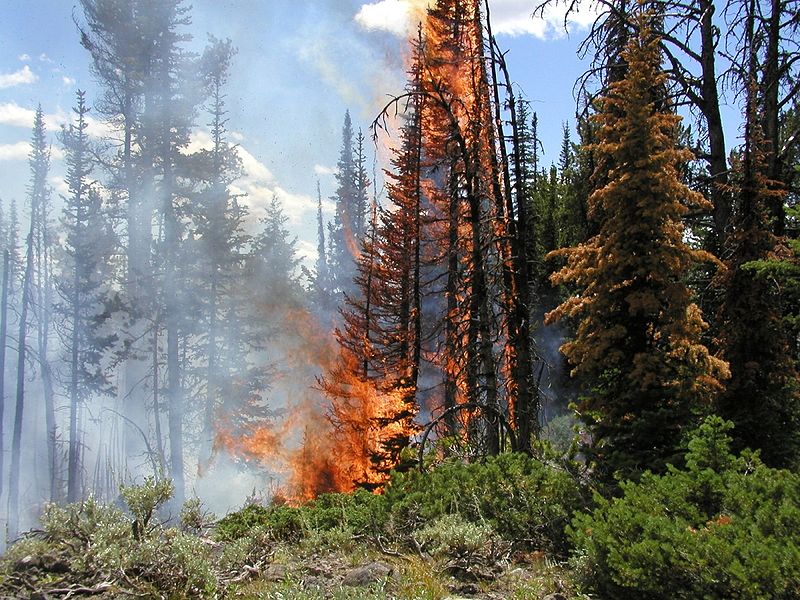Special delivery! See our visiting baby yaks (Dec. 20–Jan. 5) this holiday. Learn more
Science News
Yellowstone Wildfires
July 26, 2011

While some western parks are facing dangers due to record snowmelt this summer, a new study reveals that Yellowstone will face the opposite problem as climate begins to change. Published in this week’s Proceedings of the National Academy of Sciences, the authors suggest that the expected rising temperatures caused by climate change could increase the frequency of large wildfires in Yellowstone to an unprecedented level.
The projected increase in fires would likely cause a major shift in the greater Yellowstone ecosystem that includes fewer dense forests and more open woodland, grass and shrub vegetation. The change could happen by 2050, lead author Anthony Westerling of UC Merced posits, with forests becoming younger, the mix of tree species changing and some forests failing to regenerate after repeated fires.
“What surprised us about our results was the speed and scale of the projected changes in fire in Greater Yellowstone,” Westerling says. “We expected fire to increase with increased temperatures, but we did not expect it to increase so much or so quickly. We were also surprised by how consistent the changes were across different climate projections.”
For their study, the researchers compiled climate data from 1972 to 1999 and examined it in relation to the occurrence and size of large wildfires in the northern Rocky Mountains over the same time period. Using the resulting statistical patterns, Westerling and his coauthors projected how climate change would affect greater Yellowstone fires through the year 2099.
“Large, severe fires are normal for this ecosystem. It has burned this way about every 100 to 300 years, for thousands of years,” explains co-author Monica Turner of the University of Wisconsin, Madison. “But if the current relationship between climate and large fires holds true, a warming climate will drive more frequent large fires in the greater Yellowstone ecosystem in the future.”
In the researchers' simulations, years with no large fires—very common in the recent past – become extremely rare by 2050 and are all but eliminated after 2050. The projections show that after 2050, the average annual area burned is about 100,000 hectares, or nearly 400 square miles. By 2075, the average yearly burn exceeds that of the historic season of 1988, when fires claimed more than 1,200 square miles.
While more wildfires will negatively affect most of the region's wildlife, hydrology and carbon storage, a few species may actually benefit. From Nature News:
Cathy Whitlock, an ecologist at Montana State University in Bozeman who studies the effects of fire on the environment, says that some tree species common in Yellowstone are well adapted to fire. For example, the lodgepole pine (Pinus contorta) depends on blazes to help it regenerate.